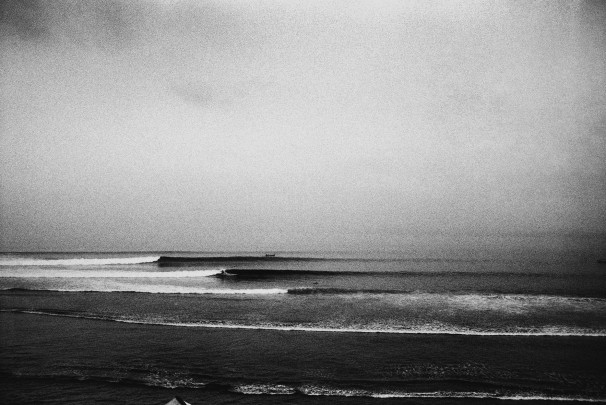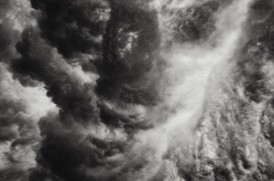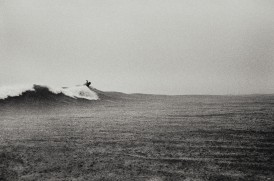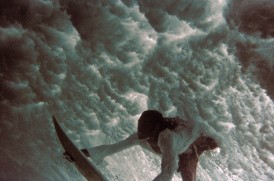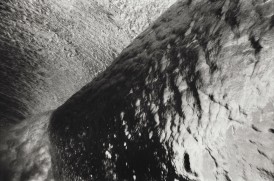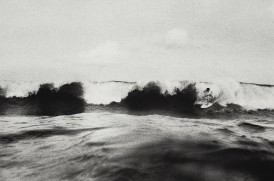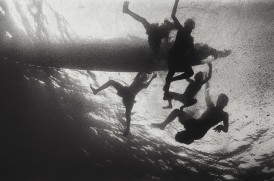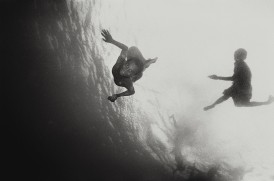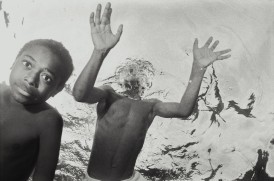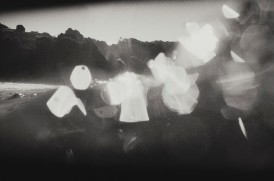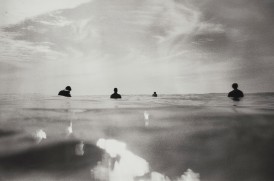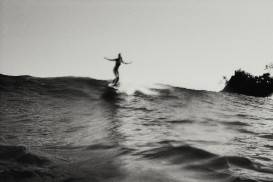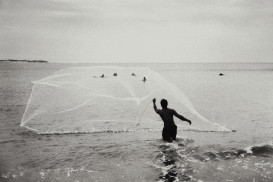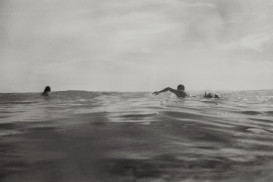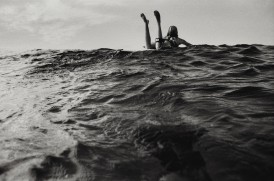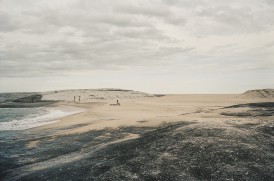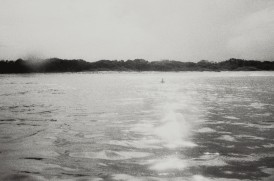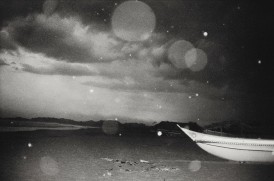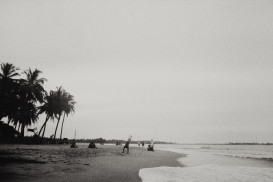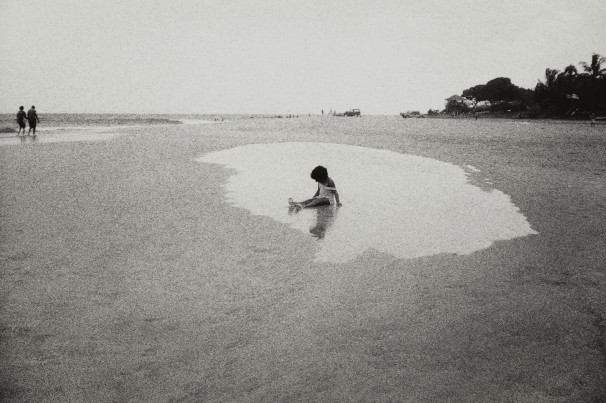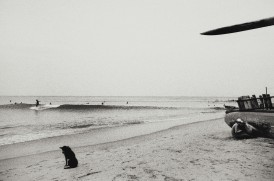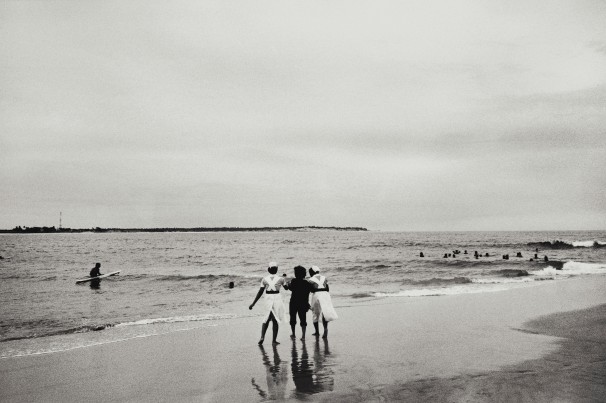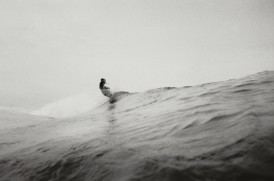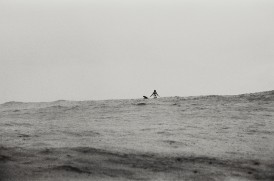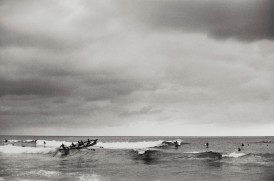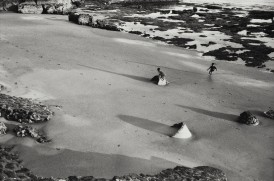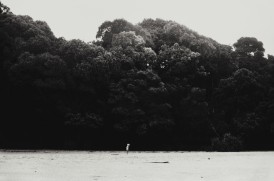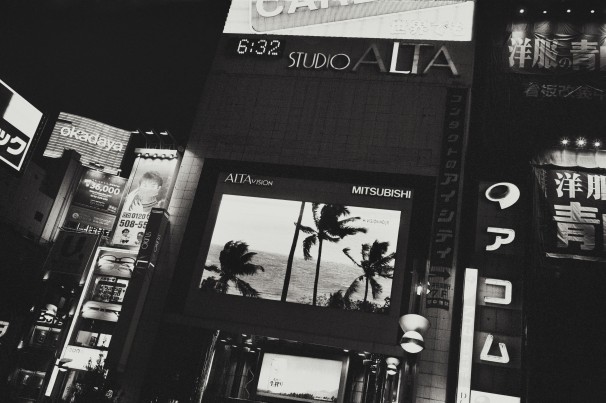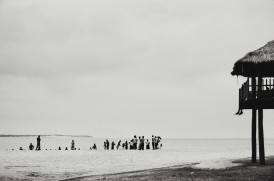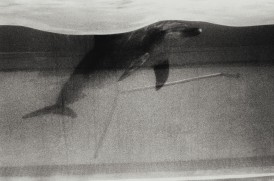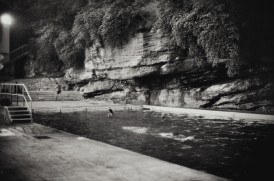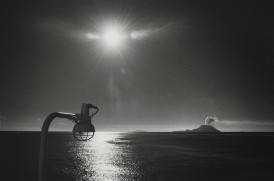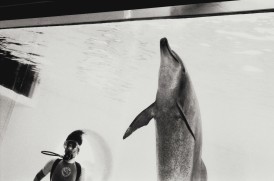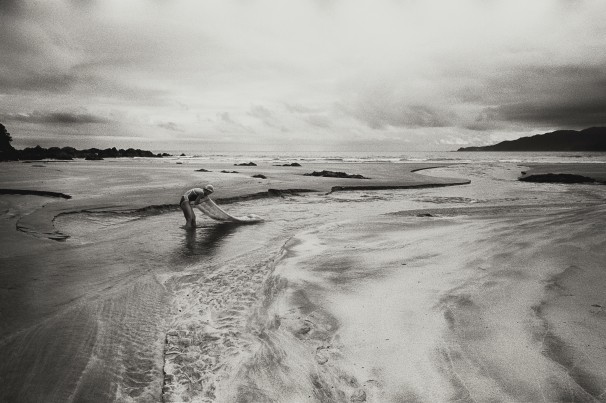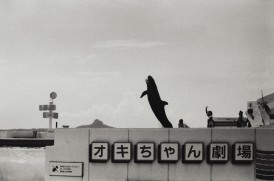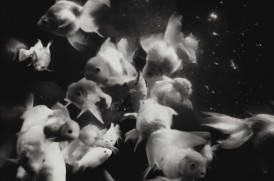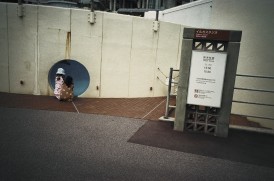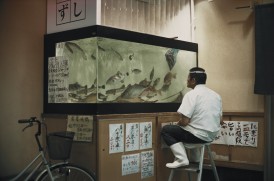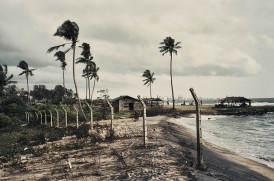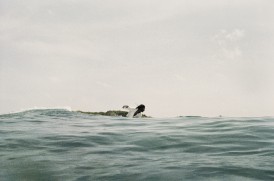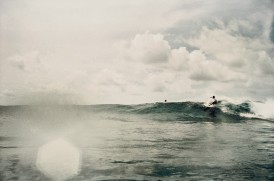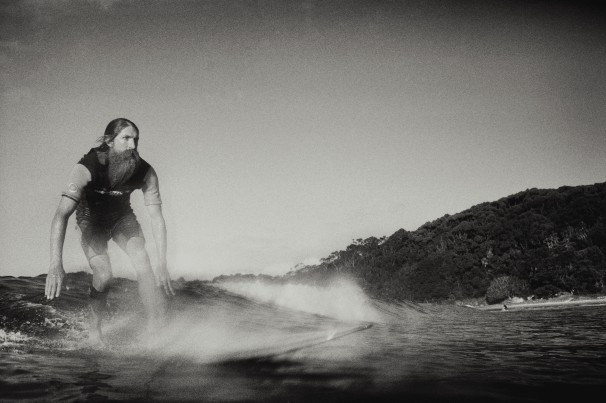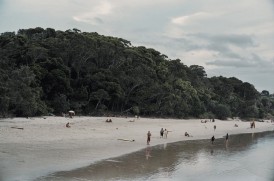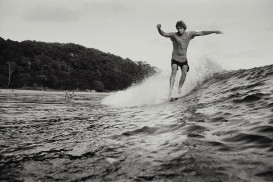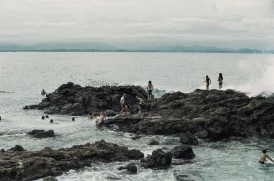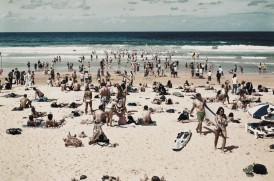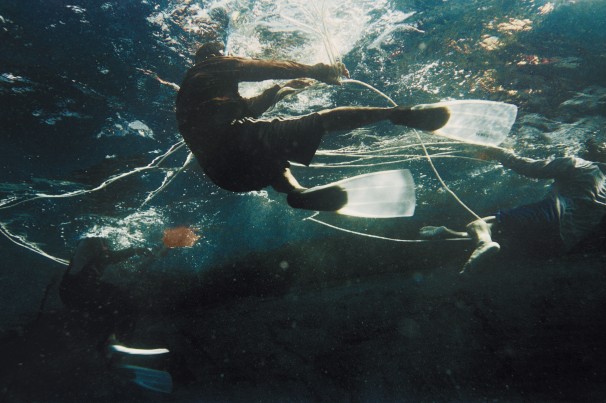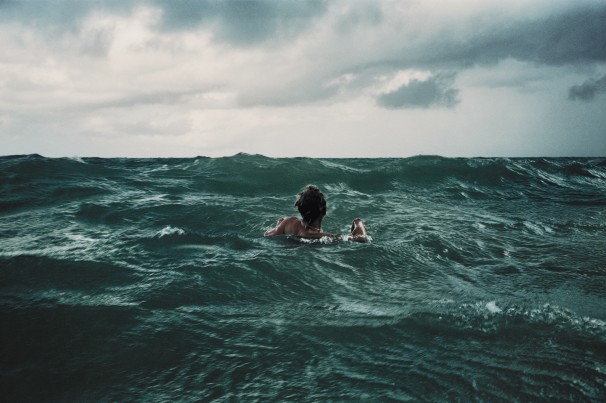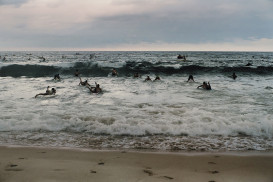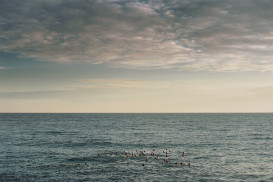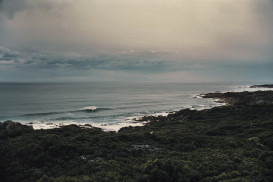02
–Blue
The founding theme of this cycle is human contact with water and the attitude towards Nature, as well as the faraway locations of the photographed places, both on Northern and Southern hemisphere.
The photographs in BLUE are not obvious; they resist interpretation and do not succumb to attempts at disassembly into component parts. They dissolve among definitions much like the element whose nature they endeavor to convey. It is easier to describe what they are not, than their essence. They are not, therefore, a series of art photographs, they are not a journal. They are not photojournalism from a journey, or a statement about a certain subject, such as “man and the power of an element,” in this case, water. True, BLUE contains each of those paths but, taken separately, each is insufficient. The same applies to themes such as blue, autobiography, or participant photography.
None provide a fully satisfactory effect; they do not convey the feel of these pictures, the emotions with which they are laden, ranging from euphoria to melancholia, they do not touch upon the mystery the images contain. BLUE opens up only when measured by a personal scale, while that requires discretion that is not obvious in our times. It is only then that it turns out there is an experience that defies rational interpretation. That is why, to “understand” BLUE, there is no need to seek the story behind the numerous walls presented on these photographs (behind a wall of water, brick wall, wall of glass). The photographs expose deficiency, understatement, because that is what suggests emotions and awakens viewers to more actively experience, directing them to unearth their own footprints in the images presented.
Tomek Niewiadomski began shooting BLUE in 2003 and has continued to enrich it with new pieces, shooting slowly and in various locations without a desire to spotlight any given location. Niewiadomski’s tags don’t tell us the images come from distant shores on different continents such as Africa, North America, Australia, Asia and Europe. We must presume that. We try to figure it out, even though the author does not encourage it at all. Sometimes a character of the Japanese alphabet, facial contours, skin color, or a characteristic head-covering stand out offering a point of reference in the geographic or culturally specific.
You might say, though I consider this distinction somewhat abused, that in BLUE photography disappears as documentary in favor of photography as art, an art of suggestive images with their own internal logic, images that tear away from their prototypes. (Anyway, did those prototypes ever exist?) This form has its expression, one that is important for the meaning of the work: people remain identical in the face of an element - culture disappears, social roles and distinctions dissipate. Ecstatic shots pay homage to the chaos of nature on a grand scale, the inspired jumble in the natural landscape, as written by Jacek Woźniakowski in describing the presentation of nature in modern European culture, i.e. in the case of BLUE – the element of water in each of its forms: rushing, foaming walls, expansive wavy surfaces and pools spilled at high tide. Oceanic interiors, the depths seen from the inside, the surface from the bottom and diving children, men with fins, but also water shot from afar, from the epidermal point of view, or simply water enclosed in a glass aquarium, of various sizes.
The fundamental theme of BLUE is “presentation of water in culture,” or simply, the impossibility of adequate presentation of an element through the language of genre, iconography or culture. That’s the reason for the move away from narrative, for breaking with convention (though without a critical tendency), that is evident in the silence, the empty space left in the center of these images. Evidence of people’s contact with water remains on the images.
In BLUE, Tomek Niewiadomski focuses on physical and spiritual contact, deprived of the practical, existential, political, economic or historic dimensions. Most shots show places where water touches land, an intersection of elements, the beginning and end, a line of waves on the beach, the shoreline, rocks. The people are small as compared to the waves, staring into the water’s looking glass, floating upon the surface, diving into the deep. Surfers, swimmers, divers, fishermen, collectors, trawlers, beachgoers, walkers, vacationers. People are an addition of little import to the mysterious, untamed existence of an element.
BLUE offers a creatively processed form of the traditional American road trip. The journey takes places via water or to water, and the fluid element has the hypnotic force of attraction. In BLUE, people are entranced in water to such a degree that they seem to collapse into it, while those immersed or swimming are in the embrace of an element and experience pleasure while also being kind of hypnotized by motion, submitting to water, like diving children or surfers. The particulars of BLUE go beyond the specific atmosphere. Water designates a defined world-view: everything flows, everything is not so much formless, but ready to assume a constantly new form and ceaseless change. - Magdalena Ujma
